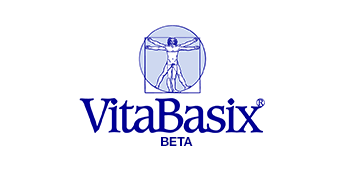With advancing age, individual bodily functions decline more and more, and the eyes can also increasingly deteriorate. The macula (also called the yellow spot) sits in the center of the retina. Many sensory cells are located there. The macula is responsible for sharp and colorful vision. Unfortunately, our eyes have to withstand many strains over the years. Screen work, UV radiation, stress as well as a poor diet can have a negative effect on vision. People who spend a large part of the day in bright sunlight should be aware of the dangers of excessive light exposure to the eyes and should therefore always ensure that they have a high proportion of lutein and zeaxanthin in their daily diet. But other nutrients are also important to ensure optimal eye function.
These include the following micronutrients:
Lutein and zeaxanthin: Lutein and zeaxanthin always occur together in nature. High concentrations of lutein are found in dark leafy vegetables such as cabbage, kale and spinach, but significant amounts of lutein are also found in egg yolk. Zeaxanthin is also found in these food sources as well as in maize and other vegetables. Both nutrients have a cell-protecting effect in the retina and can thus contribute to maintaining normal eye function.
Resveratrol: This vital substance is often referred to as a standardized extract from red grape seeds. It is not only one of the strongest cell protectors of all, but also very well-known because of its supportive effect on the vascular system, especially on the very thin and sensitive capillaries such as those found in the eyes. Cocoa, peanuts, pistachios and berries also contain this nutrient. The highest content of resveratrol, however, is found in Japanese knotweed.
Vitamin E is most commonly found in cell membranes. Vitamin E can help protect cells from too much stress. The body also needs vitamin E to preserve important omega-3 fatty acids. Foods that contain a lot of vitamin E include various oils, nuts, seeds and green vegetables.
Vitamin C: Citrus fruits are considered to be the classic main suppliers of vitamin C. But many vegetables such as peppers, broccoli and cabbage are also rich in vitamin C. Vitamin C helps to support collagen synthesis. This process is important for the eyes and the thin blood vessels they contain. Vitamin C also serves as a cell protector, as it can help protect the cells from oxidative stress.
Zinc: Zinc is found in meat, dairy products, fish, whole grains, legumes and nuts, among other things. This trace element also has a positive effect on the eyes. Zinc is an important component of many enzymes and their co-factors. Zinc contributes to the maintenance of normal vision by stabilizing cell membranes and regulating the transport system through them.
Lycopene: Is a carotenoid pigment. This substance gives tomatoes, for example, their intense red color, but must first be released from the skin by heating the fruit. Due to its many properties, lycopene can contribute to the maintenance of normal vision.
Copper: In addition to cocoa, coffee, tea, legumes and whole grains, shellfish and offal are also high in copper. This trace element can contribute to a normal energy metabolism and a normal immune system, both prerequisites for maintaining normal vision.
Omega-3: These fatty acids are found in many types of fish such as tuna, mackerel, salmon, trout as well as in certain cooking oils and nuts and seeds. DHA and EPA can be formed in the body from alpha-linolenic acid and belong to the so-called omega-3 fatty acids (triple unsaturated fatty acids), which fulfil important functions in the organism. Omega-3 fatty acids can help support normal heart function as well as normal vision.
Blueberry fruit: The anthocyanins contained in the fruit give it its blue color. These plant pigments have a positive effect on the blood vessels, especially in the eyes. Blueberries can also help to supply the visual organs with sufficient nutrients and oxygen.





 Chronobrands
Chronobrands




Reviews
There are no reviews yet.